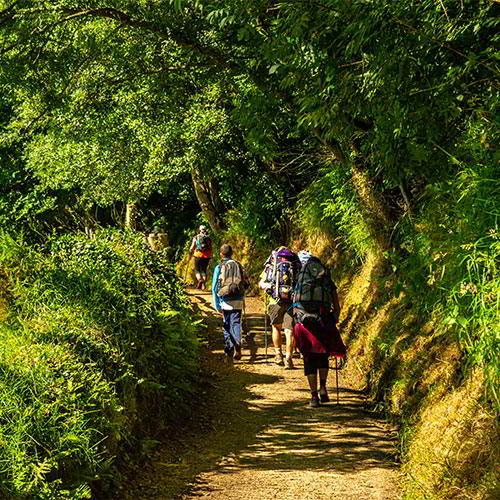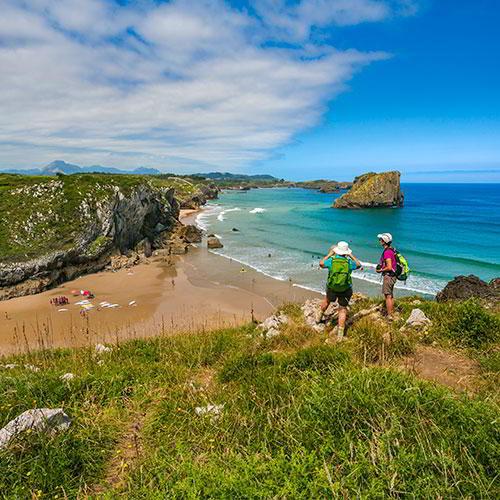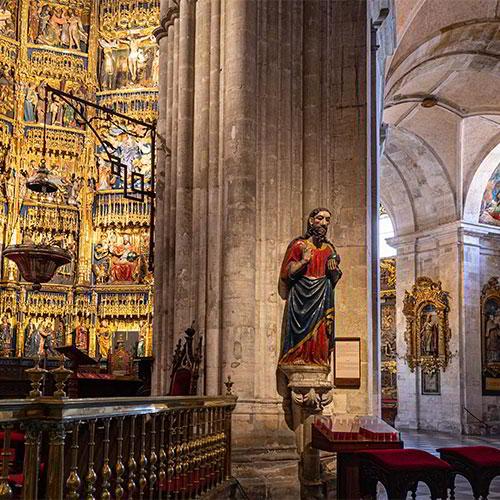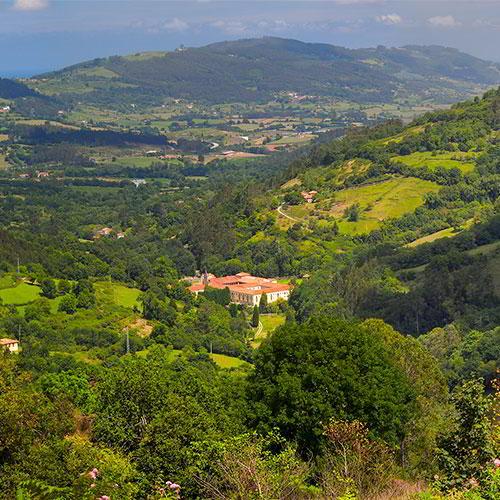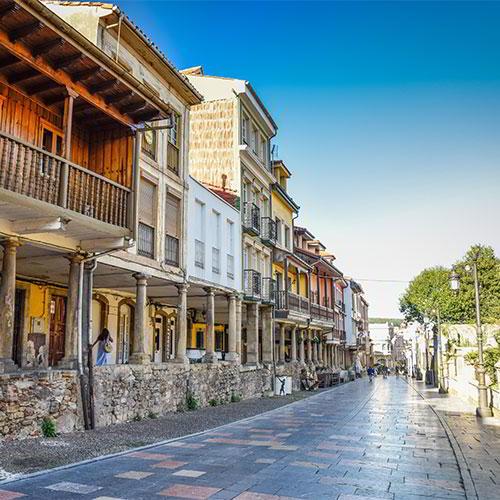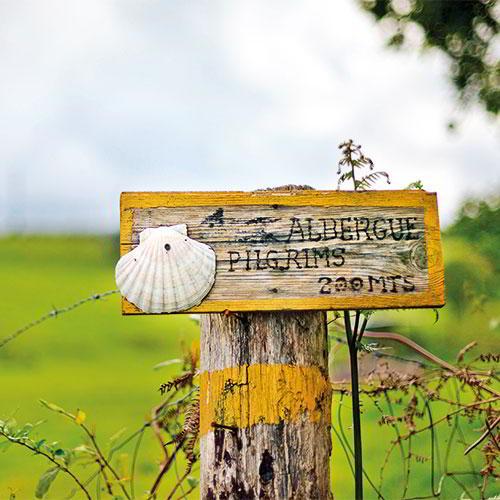The St. James's Way is a route where pilgrims dialogue with History, Art and legends, and where spirituality beats in the air, and in human relations.
Asturias can be part of a longer route or a starting point. If it is the starting point of the walk, you must fill in the document to obtain the credential that will be stamped stage by stage and that will allow you to obtain the Compostela, at the end of the route, in Santiago.
Jacobean routes in Asturias
The northern routes of the Way of St. James, which converge in Asturias and have Oviedo/Uviéu at their heart, have been declared a UNESCO World Heritage Site for their historical importance and cultural vitality. The Jacobean routes that pass through Asturias are the Primitive Way and the Northern or Coastal Way, as well as the Way of El Salvador (which connects León with Oviedo/Uviéu), and the connections between the Primitive Way and the Coastal Way.
All these Jacobean routes have a modernised network of hostels, according to the lifestyle and the way of understanding the Camino of the pilgrims of the 21st century, and are designed for rest after the many kilometres of each stage. All of these stages allow pilgrims to enjoy the warm welcome of the Asturians, the interesting architecture and the delicious gastronomy. In addition, there is also a large network of rural and urban accommodation to choose from, in case you prefer this option.
/documents/39908/67632/catedral-oviedo.jpg/a7f2c02e-b4c7-9fec-121e-03a1583978d3?t=1687174279397
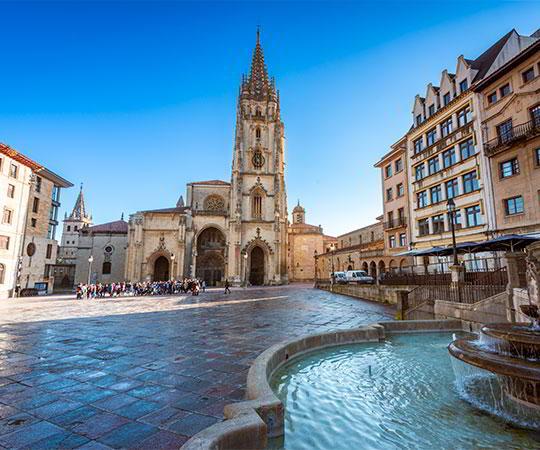
El Salvador Cathedral in Oviedo/Uviéu
The most notable Jacobean routes that pass through Asturias are, on the one hand, the Primitive Way, which according to the story-legend is the one that King Alfonso II of Asturias made on his journey to Campus Stellae from Oviedo/Uviéu, and which over time would turn the monarch into the first pilgrim and the route he followed into the Primitive Way. On the other hand, there is the Northern or Coastal Way, which runs from Irún (Euskadi) parallel to the Cantabrian Sea.
The Primitive Way divides the 145.6 kilometres of rural and mountainous landscape it covers into seven stages. Starting in Oviedo/Uviéu, it passes through the councils of Grado, Salas, Tineo, Pola de Allande and Grandas de Salime, and throughout this historic route you will find natural landmarks, such as mountains, sierras, caves, rivers, waterfalls, forests, etc., and also cultural ones such as museums, churches, hermitages, ancient monasteries, etc.
You can follow variants, or opt for the original Hospitales route, between Borres and Puerto del Palo, which, as its name suggests, has five former pilgrims' hospitals and is considered the original route.
/documents/39908/67632/camino-primitivo.jpg/ed96716e-5e3a-cc4c-1e23-14bde0c7e371?t=1687174190218

Primitive Pilgrim's Way to Santiago de Compostela. Monastery of San Salvador (Council of Salas).
The Way of St. James is one of the most important cultural itineraries of humanity and was one of the most notable contributions of the Kingdom of Asturias in Medieval Europe.
The Camino de la Costa is 281.9 kilometres long, divided into thirteen Asturian stages that barely leave the sea. Thus, this Way goes through Bustio, Llanes, Ribadesella/Ribeseya, Priesca, Casquita, Gijón/Xixón, Avilés, Muros de Nalón, Soto de Luiña, Viḷḷamouros, Outur, A Caridá, A Veiga and Abres.
A route full of pleasant discoveries, both natural and cultural, as it crosses medieval bridges, passes through monasteries, and overlooks beautiful beaches and impressive cliffs. It also passes through seaside towns and villages, and brings you close to the footprints of ancient pilgrims' hospitals. And of course it also shows you palace complexes, as well as Indian architecture and religious architecture in the form of hermitages, chapels and churches.
/documents/39908/67632/camino-costa.jpg/af2f2de8-decc-b669-1ec3-8dd62ae07846?t=1687174188277
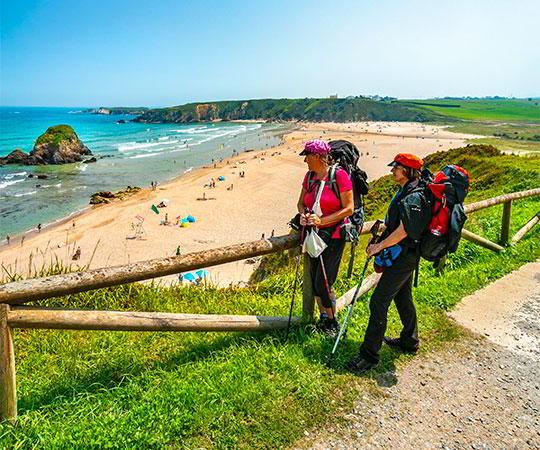
Penarronda Beach. Camino de Santiago de la Costa or Camino de Santiago del Norte (Councils of Castropol and Tapia de Casariego).
You will see that the Camino de Santiago is much more than a route, in fact it is a real vital journey to find yourself and connect with nature and history!
Way of St. James Planner in Asturias

